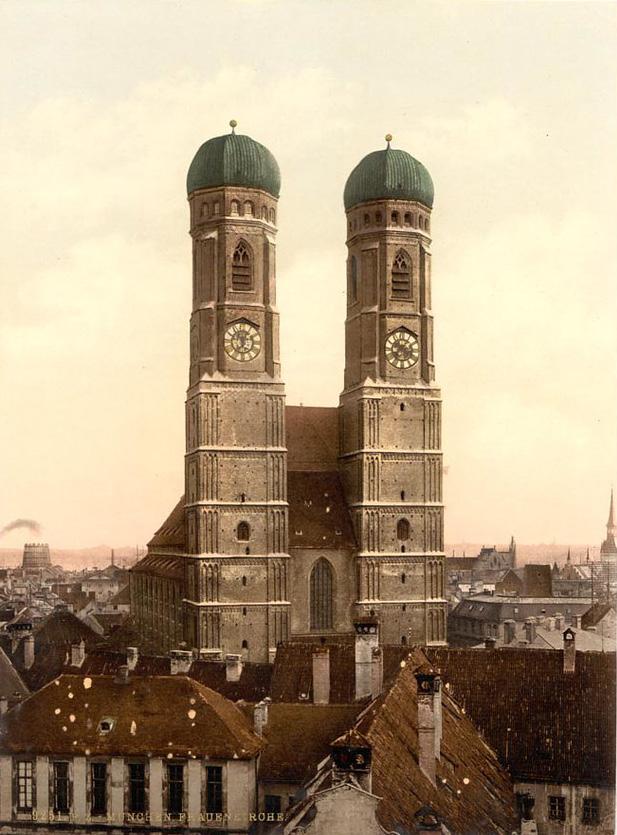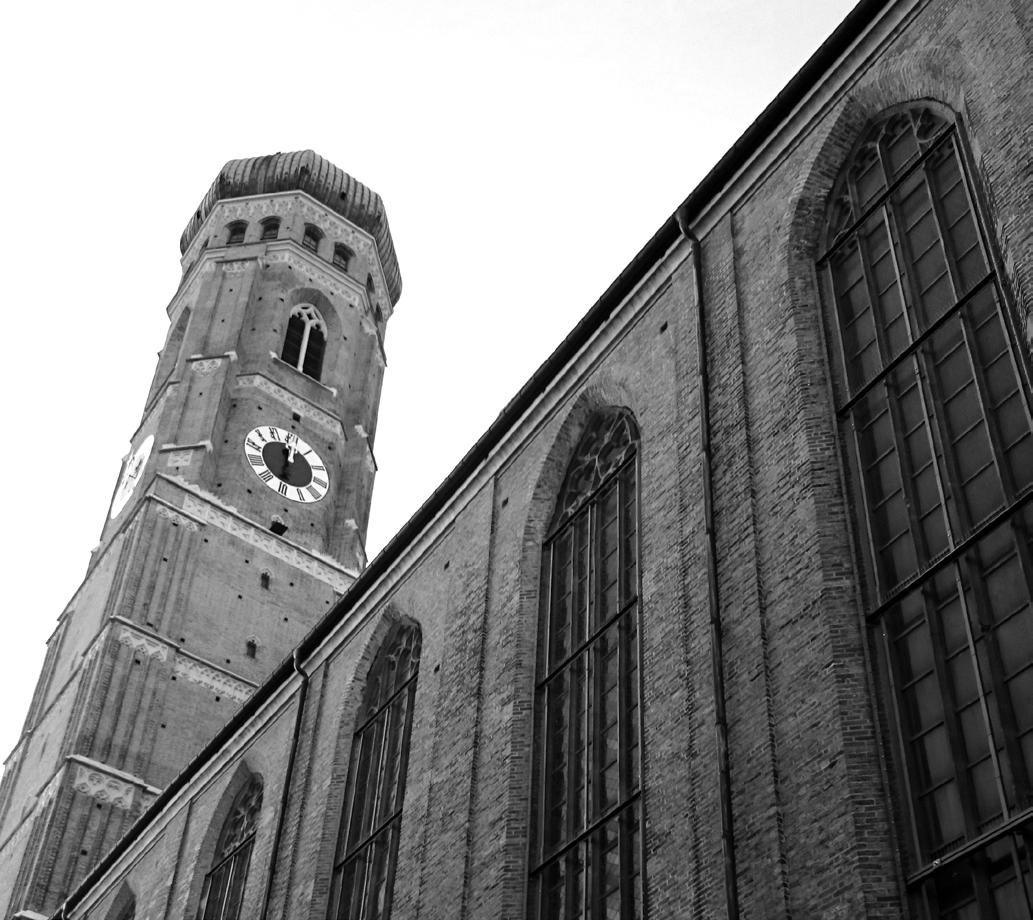
5 minute read
The Pillars and Ceiling of the Frauenkirche Ingbert Jilg
from PV Journal Munich
by Pietre Vive
the pillars and ceiling
by ingbert Jilg
Advertisement
of the frauenkirche
The Cathedral of Our Lovely Lady, or as it is mostly called, the Frauenkirche, shares a common feature with most European cathedrals, that is, it is a Gothic style building. This, however, makes it special among the Living Stones communities, who oftentimes are to be found serving in Romanesque or, more comonly, Baroque churches. It would, therefore, be worth explaining some basic fundamentals of Gothic style architecture and the ideas behind it.

While the Frauenkirche has some distinct features, its structure and concept follow characteristic Gothic principles. At first sight, when looking at the façade, observing the filigree ornaments and high glass windows, one immediately recognises the distinguished Gothic style.
The outer appearance is the first and foremost thing that shows off that it is a Gothic building. Of course, this can be recognised only if one has at least some rudimentary knowledge about this style. From experience, however, it seems that many visitors, in fact, do not recognise this style or what we mean by it—be it that they do not think about classifications of this kind, or do not have enough knowledge of historical styles. And admittedly, I would say that the Frauenkirche is not as elaborated as other Gothic churches or cathedrals, so its style might be recognised only with respect to the details.
In addition, there are several forms that would fall under the umbrella of the Gothic style, with additional variations that have been developed by different European countries and localities. There is, first and foremost, the French Gothic style, the English Gothic style, and the German Gothic style, among others. The beginning of the Gothic style was in France, and it is this which is most diffused and, therefore, popular. Moreover, there are three chronological classifications, all with varying degrees of architectural and sculptural elaboration: namely the Early, Classical, and Late Gothic style.
art & formation The Frauenkirche was constructed between 1468–1488, that is, towards the end of the Middle Ages in Europe and during the epoch of the Late Gothic style. In accordance to the place, it was erected in the German Gothic style. Notably, the remarkably short time of construction, in comparison to other constructions of this kind, is largely due to the use of bricks rather than stone. Nonetheless, the Frauenkirche has the appearance of an imposing and colossal construction; as the visitors approach the building they are often impressed by its massive proportions, particularly with its double towers. While all Gothic style cathedrals are certainly impressive, their scale is to a certain extent “reduced” as attention diverts to the ornamentation and sculptural elements and reliefs on the walls and pillars, particularly on the façade. The Frauenkirche, however, is not as decorated, so its colossal construction remains uncontested and takes centre stage. The high towers at the front, on the west end of the cathedral, are especially dominant when approaching the building. They do not have spires, nor do they carry pinnacles as can be seen in other Gothic style buildings, but are cupped, instead, by balloon-like tops, which resemble the dome of the Dome of the Rock in Jerusalem. All in all, seen from the outside, the Frauenkirche gives the impression of a monumental medieval building.
As one enters the cathedral, the atmosphere within is certainly striking. While most churches are built in such a way so as to create an environment

(opposite) The Frauenkirche, Munich, in c.1900. (right, top) South wall of the Frauenkirche, Munich. (right, bottom) Ceiling ribbing of the Frauenkirche, Munich.
different from ordinary life, Gothic style cathedrals are especially unique in this way. They evoke an atmosphere in which earthly existence seems to be transcended. In fact, Gothic style cathedrals are meant to recall the perfection of the macrocosmos, that is, they are to represent the perfection of God’s creation. This is achieved by means of mathematical and geometrical rules and principles in construction and design. Thus, if one stands inside the Frauenkirche and looks up to the ceiling, one sees a structure of linear ribs combining and shaping star-like forms. This kind of ceiling design is common to Gothic style cathedrals and may hint at the perfect order in the universe. Mathematics and geometry are indeed fundamentals of Gothic architecture. They allow humans a look into the way the cosmos is organised and reveal its order. Furthermore, they transcend material and complex thinking, generally resulting in clarity of the mind.
Another basic principle of Gothic architecture is its skyward orientation. All elements direct upwards, as the mind should ultimately be directed towards the heavens and towards God. This principle is realised in the Frauenkirche through the use of high columns, windows, and the height of the architectural framework in general. In contrast to the English or Slavic Gothic style, and even several German Gothic churches and cathedrals, however, there are hardly any elaborated spires. This very characteristic element is completely lacking. The double towers reach hundred metres in height though, while their arrangement is similar to that of other cathedrals, that is, at western end of the long axis of the nave, over the main portal.
The interior is nowadays composed of elements from different epochs, since it has been redesigned many times, with several Baroque interpolations as well as more modern elements introduced during the restoration period following the Second World War. Some of the original Gothic style interior has survived though, including several statues, the two rows of unpainted portraits of biblical characters in the choir, and many stained-glass windows, for example, the large one at the East showing scenes from the life of Mary. Nevertheless, due to the many Baroque style paintings and decorations, the atmosphere on


the interior of the Frauenkirche is not as sublime as one expects in Gothic ecclesiastical buildings. Nonetheless, the modern styled elements do fit quite harmoniously into the Gothic fabric, as it seems to me and other visitors.
In conclusion, it can be maintained that the Gothic style of the Frauenkirche may help to recall a distinctive time of Christianity, and is certainly something that may impress the majority of visitors.










